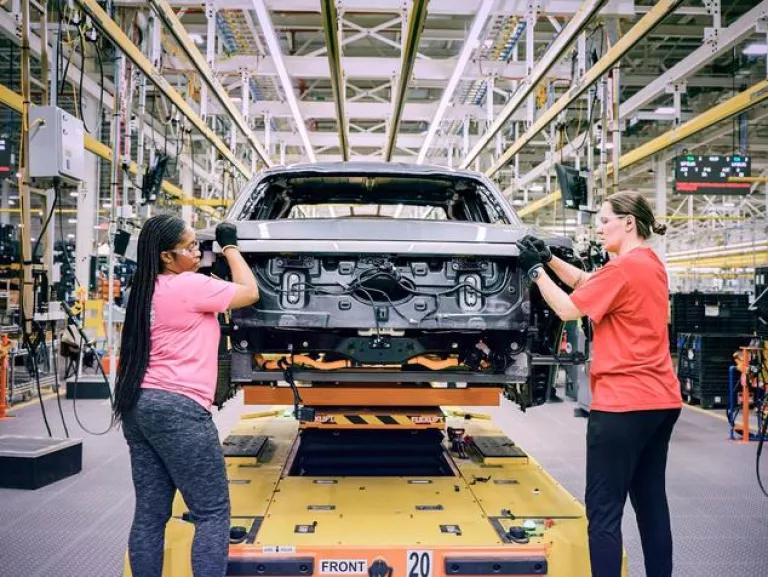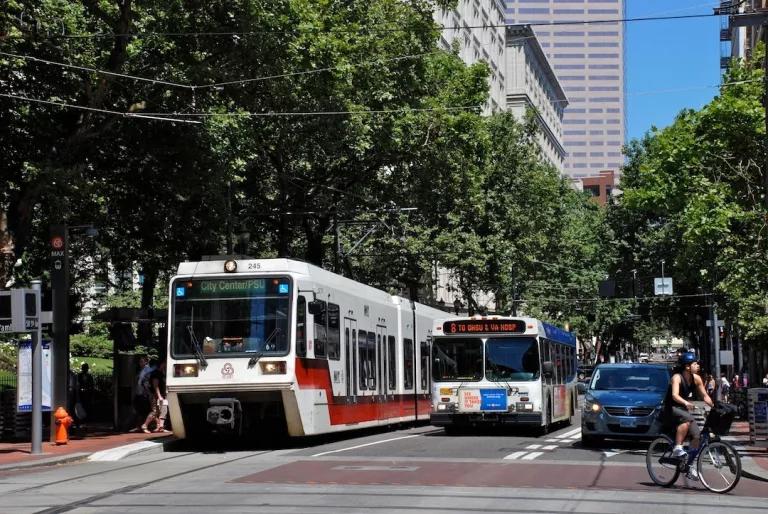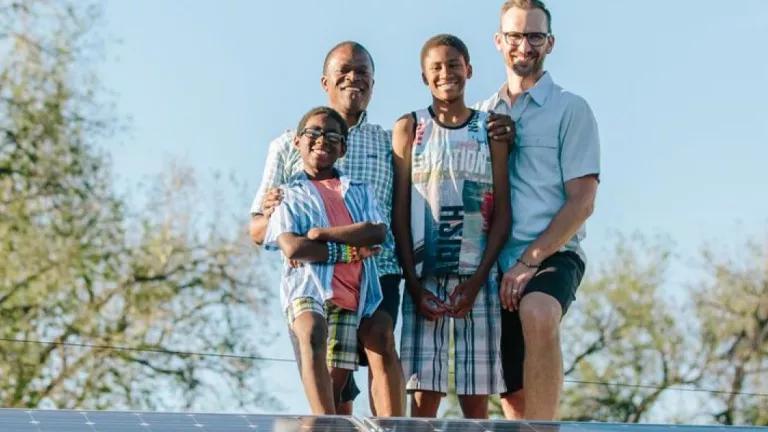Delivering an Affordable, Zero-Polluting Transportation Future
In 2023, eight states adopted clean vehicle standards and companies invested record amounts in EVs and battery factories. The Biden administration can build on this progress with strong clean car and truck standards in 2024.

Los Angeles downtown at dusk
This blog is part of NRDC’s year-end series reviewing 2023 climate and clean energy developments.
This year, we turned the corner on the road to a more affordable, zero-polluting future. State action and federal support helped drive record investments in the electric vehicle (EV) supply chain. And, with the costs of these vehicles falling, consumers bought more than one million electric vehicles, a stunning new record. Here are some of the key highlights.
Record-setting domestic investments
Another $82 billion in domestic investments in EV and battery manufacturing has been announced since President Biden’s signing of the Inflation Reduction Act in 2022. This brings U.S. investments to a whopping $173 billion, resulting in 212,000 announced jobs, according to a study by Atlas Public Policy. This follows $20 billion in investments in public charging infrastructure nationwide and an additional $67 billion in announced investments in charging infrastructure for passenger vehicles and commercial trucks. Notably, the large majority of EV investments and jobs are occurring in districts represented by Republicans, showing the party has more to gain than lose with the technology transition.
States continue to set the bar
States continue to lead the transition to clean vehicles across the country. In 2023, eight more states adopted rules requiring automakers to sell an increasing number of new zero-emission vehicles, representing 82 percent of sales, by 2032, as my colleague Kathy Harris writes. Altogether, 12 states, accounting for 32 percent of the U.S. passenger vehicle market, have adopted standards transitioning the new sales fleets to zero-emission vehicles. The commercial truck market is following suit, with Colorado and New Mexico adopting Advanced Clean Truck and Heavy-Duty Omnibus rules. These rules require increasing sales of zero-emission trucks together with reductions in smog-forming pollutants, with a total of nine states, representing 22 percent of the U.S. market, adopting them. These standards, as Guillermo Ortiz describes, will lead to cost savings for households and fleets, reduce inflationary pressures, and deliver improved public health and carbon reductions.

The Electric Vehicle Center on the grounds of the Ford River Rouge complex in Dearborn, Michigan
Ford Motor Company
Labor demonstrates that automakers can invest in both workers and EV factories
As my colleague Luke Tonachel notes, the successful strike by the UAW resulted in significant gains for workers of the Detroit Big Three (Ford, GM, Stellantis). It demonstrated that EV factories, along with battery manufacturing facilities, can and should enjoy the same union protections as the workforce making internal combustion engine vehicles. Despite the media citing anecdotal numbers suggesting that the production of EVs would require fewer workers compared to internal combustion engine vehicles, early evidence reported by Emily Pontecorvo at Heatmap indicates that EVs require more labor, not less.

A cyclist riding past a TriMet MAX light rail train and bus in Portland, Oregon
NACTO via Flickr, CC BY-NC 4.0
Some state transportation departments make progress, but more work is needed for most
The Bipartisan Infrastructure Law, enacted two years ago, brought the largest infusion of money ever for transportation at the federal level. As my colleague Shruti Vaidyanathan describes, this included new funding programs for projects delivering carbon reductions together with improved equity and access. A new report by NRDC, Getting Transportation Right: Ranking the States in Light of New Federal Funding, evaluates the states on this front. It finds that states like Colorado, Minnesota, and New Jersey are doing among the most to improve equity and climate outcomes while others, such as Arizona, Louisiana, and South Carolina, lag far behind. States have the opportunity to shape their transportation investments, systems, and policies by redirecting federal dollars toward mobility solutions and fixing and maintaining roads rather than expanding road infrastructure. The U.S. Department of Transportation’s new greenhouse gas (GHG) performance measure rule, which requires states to track transportation GHG and set declining targets, will hopefully help states direct funds toward low-carbon transportation investments.
Even more to come
As 2024 approaches, there is the opportunity to continue the promise of accelerating to a zero-polluting, more equitable, affordable transportation future. There’s no time for a pit stop, and both state leaders and the Biden administration must move forward to live up to the promise of the federal transportation funding programs and investments, ensure increased access to charging infrastructure, and deliver strong vehicle standards in the new year.




